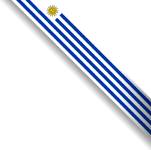Cuando visitamos China, algo muy recurrente son las campanas, desde las enormes que se tañen golpeándolas con un tronco hasta las que se ubican en hilera según su tonalidad y se tañen golpeándolas con una barra de hierro. La podemos ver en la mayoría de las ciudades.
When we visit China, a very recurrent view is the bells, from the huge ones that we must is hit them with a log till the small ones which are placed in rows according to their hue and must be hitting with an iron bar. We can see them in most of the cities.
Para los chinos las campanas representan la armonía universal y tocarlas trae buena suerte a la persona, así que es común en varios lugares tener a disposición una campana para que, por unos pocos yuanes podamos tener la experiencia.
For the Chinese the bells represent universal harmony and bring good luck to the person who is touching it, so it is common in many places to have available, paying few yuans, a bell for being touched.
Lo mismo sucede con los tambores que son enormes y se deben golpear con un mazo.
The same happen with the drums which are huge and must be hit with a mallet.
La campana y el tambor fueron utilizados originalmente como instrumentos musicales en China pero después empezaron a utilizarse para marcar las horas. En la época de la dinastía Han (206 a.C-220), ya se utilizaba una campana para marcar la hora al amanecer, mientras que un tambor lo hacía a la puesta de sol. Las campanas y tambores jugaron por lo tanto un rol esencial en la organización de la vida y el trabajo de la gente en la antigüedad, ya que no había ninguna otra forma de medir el tiempo.
Este sistema se utilizó hasta 1924,cuando el último emperador de la dinastía Qing se vio obligado a dejar la Ciudad Prohibida y un reloj de estilo occidental se hizo el medio oficial de cronometraje.
The bell and drum were originally used as musical instruments in China but later began to be used to mark the hours. At the time of the Han Dynasty (206 BC-220), already used a bell to mark the time at dawn, while a drum made it to the sunset. The bells and drums thus played a key role in the organization of the life and work of the people in ancient times, as there was no other way to measure time.
This system was used until 1924 when the last emperor of the Qing Dynasty was forced to leave the Forbidden City and Western-style clock became the official means of timing.
When we visit China, a very recurrent view is the bells, from the huge ones that we must is hit them with a log till the small ones which are placed in rows according to their hue and must be hitting with an iron bar. We can see them in most of the cities.
Para los chinos las campanas representan la armonía universal y tocarlas trae buena suerte a la persona, así que es común en varios lugares tener a disposición una campana para que, por unos pocos yuanes podamos tener la experiencia.
For the Chinese the bells represent universal harmony and bring good luck to the person who is touching it, so it is common in many places to have available, paying few yuans, a bell for being touched.
Lo mismo sucede con los tambores que son enormes y se deben golpear con un mazo.
The same happen with the drums which are huge and must be hit with a mallet.
La campana y el tambor fueron utilizados originalmente como instrumentos musicales en China pero después empezaron a utilizarse para marcar las horas. En la época de la dinastía Han (206 a.C-220), ya se utilizaba una campana para marcar la hora al amanecer, mientras que un tambor lo hacía a la puesta de sol. Las campanas y tambores jugaron por lo tanto un rol esencial en la organización de la vida y el trabajo de la gente en la antigüedad, ya que no había ninguna otra forma de medir el tiempo.
Este sistema se utilizó hasta 1924,cuando el último emperador de la dinastía Qing se vio obligado a dejar la Ciudad Prohibida y un reloj de estilo occidental se hizo el medio oficial de cronometraje.
The bell and drum were originally used as musical instruments in China but later began to be used to mark the hours. At the time of the Han Dynasty (206 BC-220), already used a bell to mark the time at dawn, while a drum made it to the sunset. The bells and drums thus played a key role in the organization of the life and work of the people in ancient times, as there was no other way to measure time.
This system was used until 1924 when the last emperor of the Qing Dynasty was forced to leave the Forbidden City and Western-style clock became the official means of timing.






